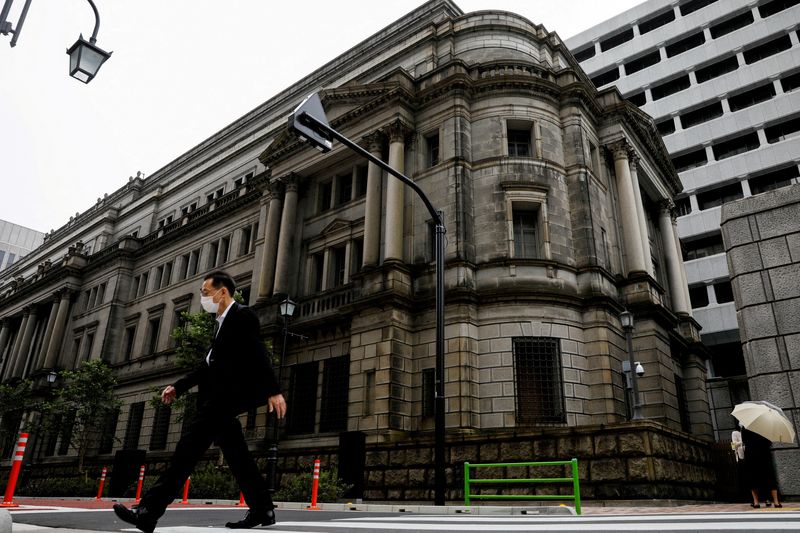Bank of Japan acts dollar falls
2022.12.21 02:17
[ad_1]

Bank of Japan acts dollar falls
Budrigannews.com – The dollar’s greatest bull run in 40 years might have at long last come to a dramatic end, now that the world’s last timid national bank – the Bank of Japan – has at last loosened up its iron grasp on long haul financing costs.
The Bank of Japan (BOJ) surprised the market on Tuesday by making an unexpected change to the control of bond yields. The change allowed long-term interest rates to rise more in an effort to reduce some of the costs of prolonged monetary stimulus.
This was a technical measure aimed at improving the functioning of the bond market, according to BOJ Governor Haruhiko Kuroda, who will step down in April, and was in no way a form of monetary tightening.
Investors were taken aback by the timing, which led to the yen’s largest one-day gain in 24 years, a rise of approximately 4% against the dollar. At 131.60 yen, the dollar was down 3.9% at the time. Ten-year benchmark yields in Japan have reached their highest level in seven years, effectively doubling the cost of long-term borrowing.
Analysts predicted that the BOJ’s move will likely reduce demand for U.S. Treasuries. Japan, the largest non-U.S. holder of U.S. government debt, has reduced its holdings of Treasury securities over the past few months. This was done to protect the yen, which had lost about 25% of its value against the dollar at one point, and to offset skyrocketing hedging costs.
As a result of the Federal Reserve raising interest rates to combat inflation that is at 40-year highs, the dollar has gained 9% this year. It has made the most gains when compared to the yen, which has been hurt by the BOJ’s policy of limiting longer-term yields.
Dollar bulls have run out of steam as other central banks, including the Reserve Bank of Australia, the European Central Bank, and the Bank of England, have raised their own rates. The U.S. currency is on track for its biggest quarterly loss since late 2010 when compared to a basket of major currencies. However, up until this point, the dollar was able to rely on its advantage against the yen to extend its bull run.
The Societe Generale ‘s head of FX technique Unit Juckes said the dollar’s second-greatest run-up since February 1985 was actually finished.
He stated, “The Fed is crawling towards the end of its rate-hiking cycle, no matter how we dress up the world.” There will be fewer and fewer rate hikes until there is nothing at all, and that will be the end of the story.”
Another twist to the story comes from the close connection between U.S. Treasuries and Japanese monetary policy.
U.S. 10-year Treasuries sold off following the BOJ’s decision, pushing yields up as much as 13 basis points to 3.71 percent. They ended the day at 3.691%, up 10 basis points.
Erik Nelson, a macro strategist at Wells Fargo (NYSE:), says, “A further reduction in demand from the world’s largest holder of Treasuries should add to volatility and exacerbate any potential duration sell-off in 2023.” Securities, a research note stated.
HEDGING BETS The rise in front-end rates and the overall appreciation of the dollar have made it more expensive for Japanese investors to hedge the costs of holding U.S. fixed-income assets.
According to data provided by Adam Cole, a currency strategist at RBC Capital Markets, hedged 10-year Treasuries are currently yielding less than -1 percent. Earlier this year, they had fallen below the yield of a 10-year JGB.
That hasn’t changed with Tuesday’s BOJ move.
Zachary Griffiths, senior investment grade strategist at CreditSights in Charlotte, North Carolina, stated, “Since Japan is not changing the policy rate, you would still have high hedging costs for Japanese investors buying U.S. dollar fixed-income assets and hedging their currency risk, while… yields on JGBs (Japanese government bonds) and investment grade credit are rising.”
The belief among investors that the Fed will keep raising rates for the upcoming months is reflected in the rise in shorter-dated U.S. Treasury yields, which have risen above longer-dated yields, making hedges significantly more expensive.
Because of this, forward currency rates fall below spot rates, or current rates. As a result, investors who have locked in their dollar exposure by purchasing Treasuries run the risk of losing money when they eventually exchange those dollars for yen.
However, due to the size of Japanese investors’ holdings of U.S. debt, some analysts believe that the stress of owning Treasuries is likely “at the margin.”
According to Rabobank senior rates strategist Richard Maguire, “in terms of Japanese investors bringing money home – even if you look on a dollar/yen basis for example, you still get an enormous pickup in U.S. Treasuries if you’re a Japanese investor, before switching back into yen.”
As a result, I don’t believe the math works. This does not appear to result in a widespread repatriation of Japanese investment into JGBs, which would have a negative impact on German Bunds, Italian BTPs, and U.S. Treasurys.
JPMorgan Chase & Co. High-grade corporate bonds, according to strategists, will also suffer as global volatility is fueled, but there is a silver lining.
More Ruble broke through 70 mark against dollar
“The inquiry will presently fixate on whether the market accepts the BoJ that this is essentially a specialized change or the start of a more significant hawkish turn,” JPMorgan credit planners Eric Beinstein and Nathaniel Rosenbaum said.
“The latter would lead to lower hedging costs in the long run while also implying more rate volatility.”








